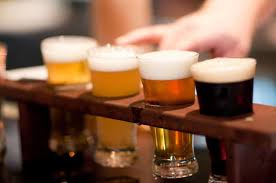Uncovered in 2015 during the reconstruction of an old brewery in Czech Republic, the three lager beers apparently were produced during the World War I era and stored in a large cold cellar at the brewery where they remained to gather dust.
The beers were bottled in dark glass and well sealed. Taking advantage of this unique discovery, researchers from Research Institute of Brewing and Malting in Czech Republic sought to produce detailed chemical profiles of these 100-year-old beers and determine the long-term effects of lager beer ageing.
Initial sensory analyses found that the beers ranged from intensely sulfuric to sour, and had off-flavours that ranged from fecal to fruity.
Using high performance liquid chromatography and other techniques, the researchers compared the beers' features to those of modern day brews.
For example, the century-old beers had higher alcohol content and were less bitter. They also contained more iron, copper, manganese and zinc.
There was also evidence of the particular yeasts used to make each of the beers, along with bacterial and fungal contaminants.
The researchers conclude that chemical changes to two of the beers were likely caused by microbial contaminants while the third beer, which was better preserved, offered the best insights into the older brews' natural ageing processes.
